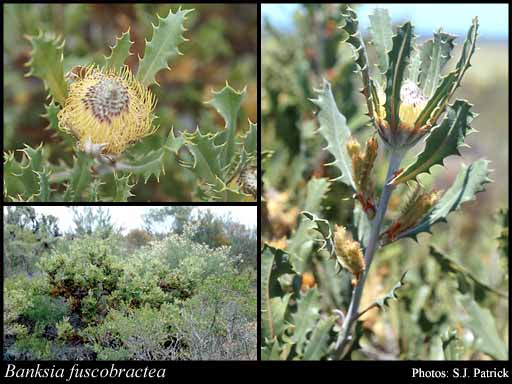- Reference
- Austral.Syst.Bot. 20:68 (2007)
- Conservation Code
-
Threatened
A taxon name retains its ‘Threatened’ status until a new name has been officially endorsed and appears in the Gazettal Notice.
- Naturalised Status
- Native to Western Australia
- Name Status
- Current
Erect, prickly, non-lignotuberous shrub, ca 1 m high. Fl. yellow, Jul to Oct. Lateritic gravel, grey sand over laterite.

Scientific Description
Shrubs, 0.5-1 m high; branchlets hairy. Leaves petiolate, alternate, 40-90 mm long, 10-30 mm wide, hairy; petiole 5-10 mm long; lamina flat, clearly widest above the middle, once divided, pinnately divided, shallowly divided, teeth distinctly pointing towards the apex, with 4-9 lobes on each side, the margins flat. Inflorescences villous (with soft, shaggy, weak and straight hairs), cream or yellow; innermost bracts 7-13 mm long, hairy. Perianth 18-23 mm long, hairy, all over, limb apex hirsute (with long, rough and coarse hairs), without awns; pistil 22-26 mm long, straight or curved, style glabrous. Follicles hairy, hirsute (with long, rough and coarse hairs), obovate, 9-12 mm long. Flowers in July, August, September or October. Occurs in the South-west (SW) Botanical Province(s), in the Swan Coastal Plain (SWA) or Jarrah Forest (JF) IBRA subregion(s). : Conservation code Threatened (T).
Distribution
- IBRA Regions
- Jarrah Forest, Swan Coastal Plain.
- IBRA Subregions
- Dandaragan Plateau, Northern Jarrah Forest, Southern Jarrah Forest.
- Local Government Areas (LGAs)
- Dandaragan, Plantagenet, Victoria Plains.